Lemurs need to stay happy, healthy, and busy just like you! In addition to our usual caretaking tasks, enrichment provides mental stimulation and physical activity for the lemurs, and adds variety to their daily routine. Enrichment is one of the most important aspects of lemur care at the DLC!
This summer, join us for a brand new tour – Enrichment: More Than Just a Toy! Whether it’s weaving the perfect hammock out of fire hose, creating a puzzle feeder from cardboard boxes, or simply spraying a funny new scent in their habitat, the DLC knows our lemur enrichment! We’ll share the knowledge we’ve gained over more than 50 years of caring for lemurs, and we’ll hand out treats and toys to some of our lemurs along the way!
This seasonal tour lasts approx. 90 minutes and is offered at 2:00 p.m. every weekday except Tuesdays, from June 4 through September 30. Ready to book? Call (919) 401-7240 to reserve your space on this brand-new tour!
CLICK HERE to learn more about our new enrichment tour, and scroll down for some great examples of lemur enrichment here at the Duke Lemur Center! Note that the lemur species and types of enrichment you’ll see on your tour will vary. The photos below are just a handful of examples of the types of food and structural enrichment we offer here at the DLC. There are so many varieties, it keeps our lemurs’ lives interesting — and our lives, too! 🙂
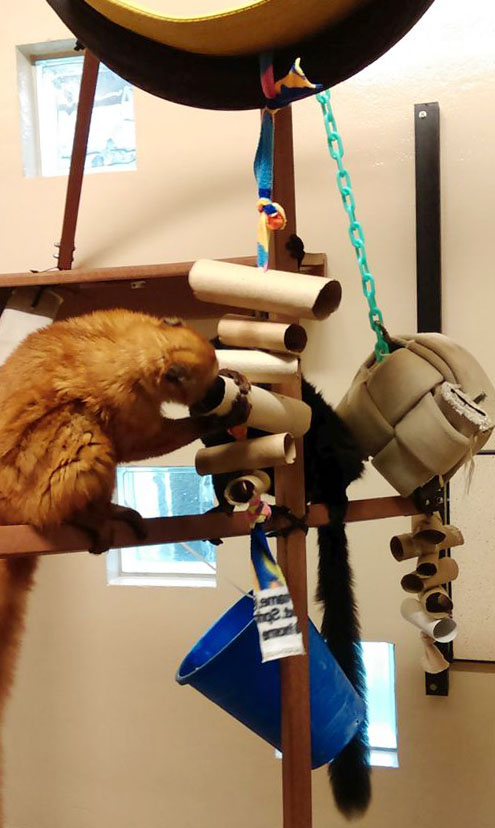
Paper towel rolls tied together with fleece are great for hiding food in an enclosure and are easy for volunteers to help create!

Feeding our lemurs their daily leaves using a variety of feeders encourages problem-solving and natural foraging behaviors.
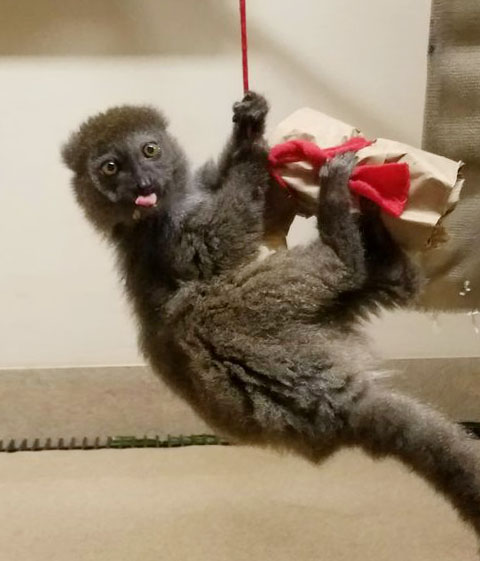
Hiding food in a paper bag is another form of enrichment — and for some lemurs, hanging it in the enclosure takes the challenge to the next level! It’s safe to say that every lemur approaches the enrichment differently!
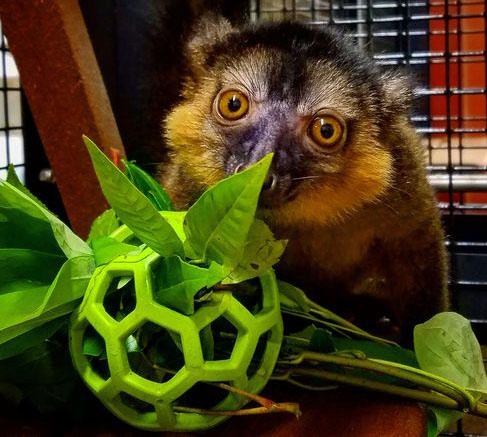
Most of our lemurs receive a daily helping of leaves that we cut for them. We change the way we present them daily to add a fun challenge!
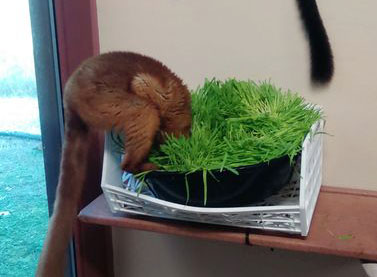
During the winter, our lemurs spend less time outside — and this has inspired us to experiment with growing wheatgrass! It’s relatively easy and takes only about a week before it’s ready to go into an enclosure. We’ve used wheatgrass as a novelty item and as a place to hide food! The roots are strong enough that it can also be taken out of the planter, so even lemurs that cannot have plastic or rubber can still enjoy the novelty of wheatgrass.

Check out these adorable mealworm feeders! Bevan, one of our lead Primate Technicians, plugs one end with melon, puts in a mealworm, then plugs the other end with some melon. Great enrichment for the mouse lemurs!
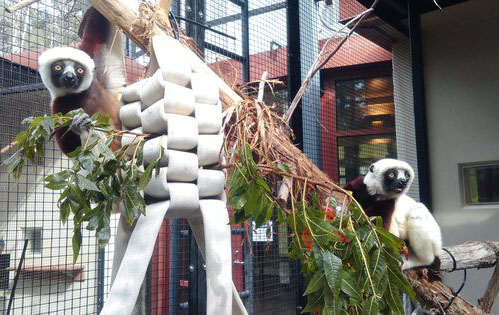
Woven fire hose provides options for hanging sumac leaves higher in our lemurs’ enclosures and supports more natural foraging behaviors.
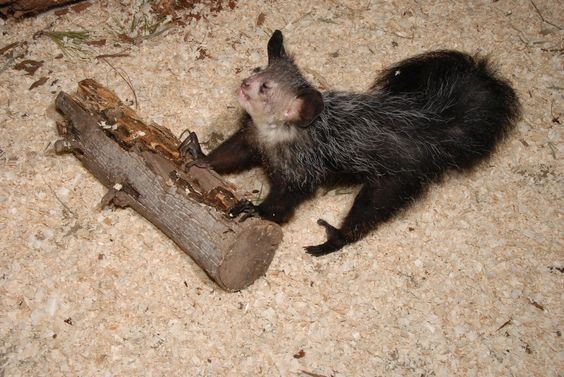
Few things make an aye-aye happier than scavenging for grubs in a rotten log!

